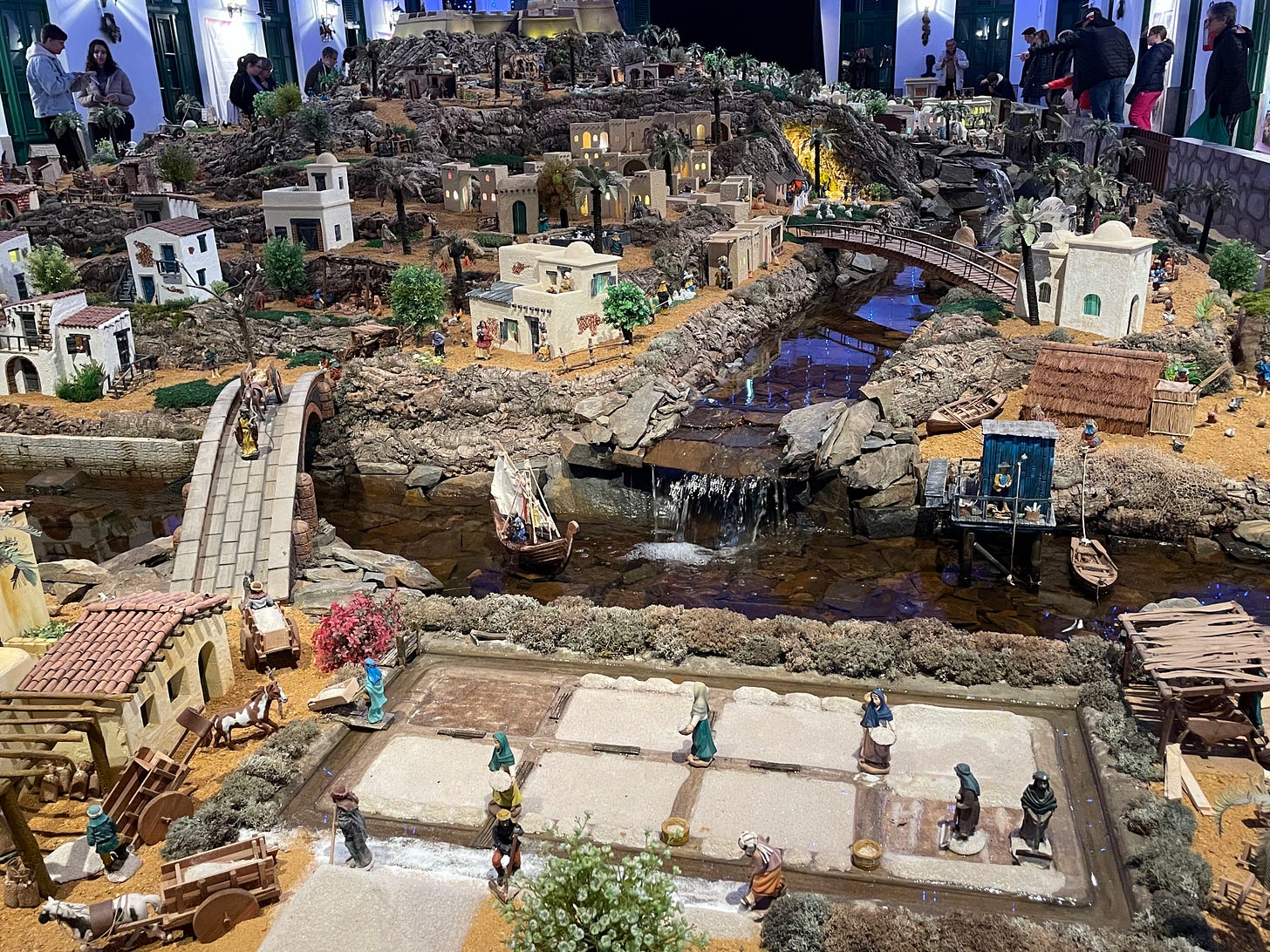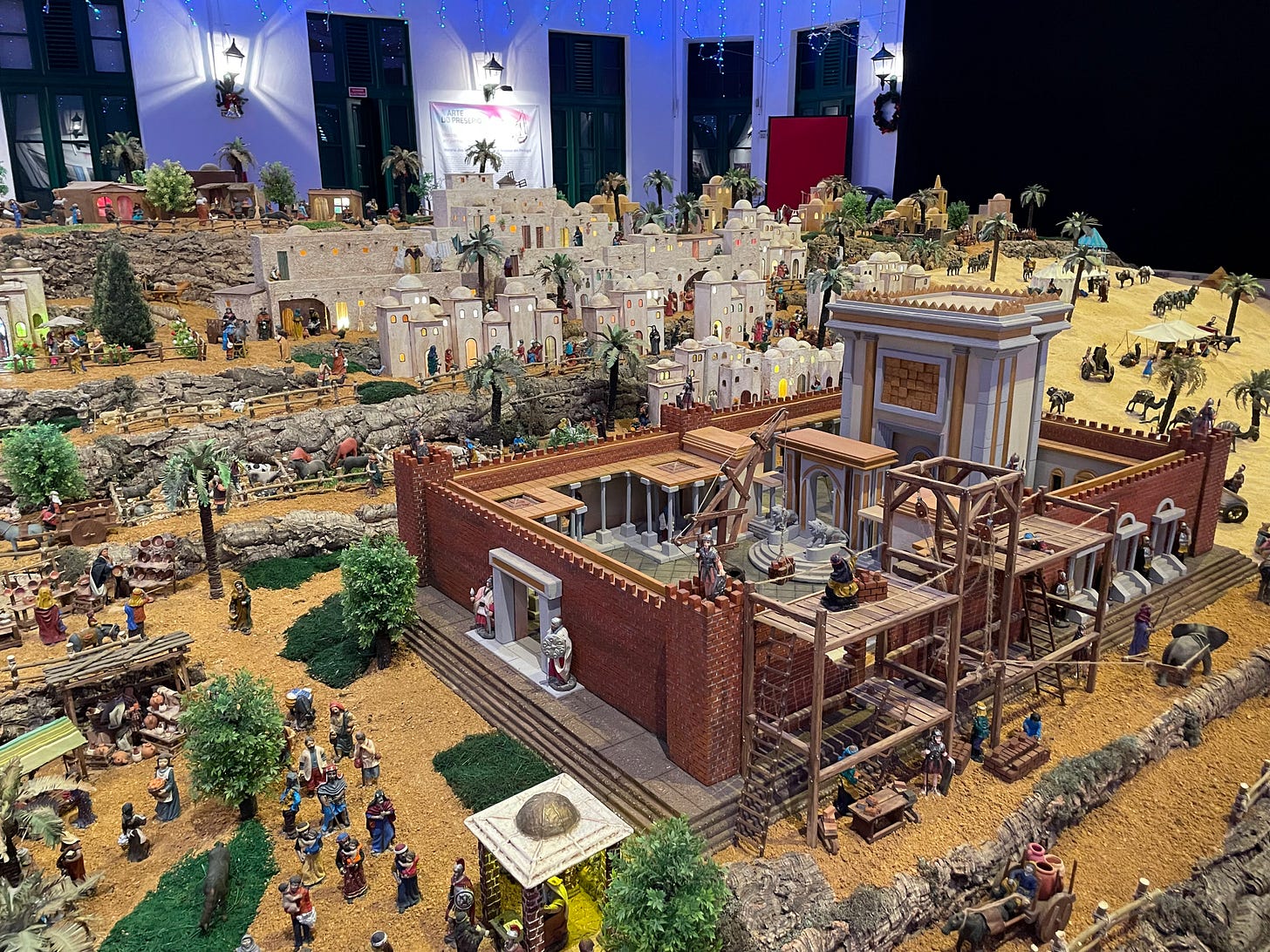What covers 230 square meters (i.e. 2475 square feet)… was created with 20 tonnes of sand, 4 tons of rock dust, and 3000 kilos of cork … and includes over 5,600 miniature figures? It is Presépio Gigante … Portugal’s largest nativity scene. And oddly enough, it is in little old VRSA.
Presépio
While we have been trying to learn Portuguese for some time, the word “presépio” was not in any of our Quizlet decks. I learned that the word comes from the Latin word “praesepium” meaning stable or corral. The word has over time acquired a religious connotation, having become a Catholic reference to the birthplace of Jesus Christ in Bethlehem.
It is believed that the first nativity scene was built by St. Francis of Assissi in 1223 to explain the story of Jesus’ birth to the common people who could not read or write. With a bale of hay, a donkey, and a few other props it is believed he donned a robe and played a part in the scene. 3 centuries later, the Duchess of Amalfi commissioned a nativity scene to be made out of 116 figurines. But it took until the 18th century for the practice of making nativity scenes for ordinary homes to spread throughout Europe. In the 20th century, many municipalities in Portugal began installing large displays in the town squares.
But why VRSA?
It turns out that Ernesto and Carmem Pires used to construct a crèche in a small chapel in Castro Marim, but they dreamed of a larger space that would allow them to expand their work and expose it to a greater public. In November 2003, along with a few volunteers they moved to the Centro Cultural António Aleixo in VRSA. Their first display was 20 square meters. As the number of visitors grew, so did the display reaching 90 square meters by 2007. However, Ernesto and Carmem were getting older and a decision had to be made. After considering its financial viability, the city of VRSA purchased the figures and enlisted employees of the cultural center to take over the task. In 2008, the Presépio Gigante was presented to the public having grown to 100 square meters and 1000 figures.
A modest entry fee of €0.50 was added in 2012, but this did not deter guests. That year 30,000 visitors came to view this ever-growing work of art. Today the fee to enter is a whooping €1.00, and there is typically a short line waiting to enter. I learned that a core group of five works throughout the year on the project…acquiring new pieces and crafting others. In the fall volunteers are enlisted to work at night, on weekends, and on holidays.
At least two months of work are needed to prepare and set up the base where all the technical area of the structure is located, which allows for all the scenic effects, the operation of lakes and mechanized figures, or the complex lighting of the houses. — taken from a sign inside the building
Algarve Flair
You could easily miss Jesus in the manger as you enter the room. He is to your left. Frankly, I had to walk back to the beginning to find him. One is immediately drawn into this miniature world learning lessons along the way. Many of the lessons focus on the local community. You are offered lessons in the salting of fish, how salt is harvested, how a waterfall powers a mill, how grain is milled, how oranges are grown, and how olives become olive oil.
Small placards provide interesting information. I observed parents kneeling beside their children and reading alongside them. I learned some fun things myself. For example…
Read the text below which explains the scene above.
You slowly walk through time observing the building of Herod’s Castle and learning about pagan rituals.
You learn about Ceasar Augustus ordering the census of Romans and non-Romans.
It’s hard to fully describe the level of creativity, and craftsmanship on display. Needless to say it is not like any nativity scene I’d ever seen. A tour of last year’s presépio is below.












Wow!
Thanks for sharing!